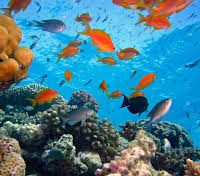Marine Heat Waves
Marine heat waves (MHWs) have become a pressing concern as global temperatures continue to rise, leading to significant changes in ocean ecosystems. The occurrence of the hottest June ever on record and recent forecasts by Mercator Ocean International highlight the severity of the situation.
Regions Experiencing Marine Heat Waves
According to Mercator Ocean International’s recent forecast, several regions are currently experiencing MHWs. These regions include the north-east Pacific, the southern hemisphere in the southern Indian Ocean and the Pacific, the north-east Atlantic, the tropical North Atlantic, and the Mediterranean. The extended duration and intensity of these MHWs are a growing concern for marine life and coastal communities.
Defining Marine Heat Waves
MHWs are extreme weather events in the ocean characterized by a substantial increase in sea surface temperatures. To be classified as an MHW, the surface temperature needs to rise 3 or 4 degrees Celsius above the average temperature for at least five consecutive days. These prolonged periods of elevated temperatures can last for weeks, months, or even years.
Impact on Marine Ecosystems
Marine heat waves have devastating effects on marine ecosystems. They have been linked to the deaths of marine species, altering migration patterns, and even coral bleaching. High ocean temperatures during MHWs can lead to massive coral bleaching events, causing corals to expel the algae known as zooxanthellae living in their tissues, turning them entirely white. This phenomenon results in the debilitation of corals, rendering them more susceptible to life-threatening illnesses, thereby disturbing the fragile equilibrium of marine ecosystems.
Greenhouse Gas Emissions and Ocean Absorption
As the global air temperature increases due to greenhouse gas emissions, the oceans absorb a significant portion of the additional heat. Over the last few decades, the oceans have absorbed about 90% of the heat caused by the release of greenhouse gases from human activities such as burning fossil fuels and deforestation. This absorption has led to a considerable increase in the global mean sea surface temperature.
Projected Increase in Marine Heat Wave Days
Research suggests that MHWs have become more frequent and intense in recent decades due to global warming. With a global warming of 1.5 degrees Celsius relative to preindustrial levels, there is a projected increase of a factor of 16 in MHW days. This alarming trend indicates that MHWs are likely to become more prolonged and severe in the future, exacerbating their impact on marine ecosystems and coastal communities.
The Return of El Nino
Adding to the concern, El Nino, an abnormal warming of surface waters in the equatorial Pacific Ocean, has set in for the first time in seven years. This weather pattern is likely to trigger extreme heat and contribute to breaking more temperature records in various regions of the world, intensifying the impact of MHWs.
Month: Current Affairs - July, 2023
Category: Environment Current Affairs


